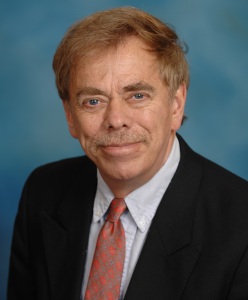 Canadians tend to look south of the border to the US to help define who they are and who they are not, often citing differences between the two healthcare systems—a tendency that has markedly increased since the rise of Trump.
Canadians tend to look south of the border to the US to help define who they are and who they are not, often citing differences between the two healthcare systems—a tendency that has markedly increased since the rise of Trump.
It seems poignant that as Canada celebrates its 150 years since Confederation (1 July 1867), the US Senate seeks to replace Obamacare with Trumpcare—“a plan” that is predicted to make Medicaid spending about 35% lower by 2036 (mostly hitting poor and older people) while benefitting the very rich with tax cuts of $250 000 (according to the Tax Policy Center).
Canada’s Medicare, modeled on the British Beveridge system (and usually described as single payer), covers about 70% of healthcare costs (excluding important costs such as prescription drugs and dental care) and is administered by the 10 provinces and three territories. The federal government is responsible for First Nations and Inuit peoples, the armed forces, Royal Canadian Mounted Police officers, federal prisons, and some primary prevention activities.
Canadians are fiercely proud of Medicare, perceiving it to be reflective of their core values: concern for the welfare of one another, tolerance, and diversity. It is seen as an important part of the national social safety net and one of the reasons Canada’s quality of life ranks at the top or near the top globally. Furthermore, this same generosity is evident on the international stage, typified, perhaps, by Prime Minister Justin Trudeau’s welcome of 25 000 Syrian refugees—the same population disparaged and banned by Trump.
However, this is only part of the story and the remainder deserves attention. The influential Commonwealth Fund Survey (CWS 2016) shows that in a group of 11 countries, Canada performed “below average and bottom of the pack” on most measures of timely access to care, including emergency services; after hours and weekends services; and same day or following day appointments with family doctor GP services. The average number of physicians per 1000 population for 11 countries was 3.5 while in Canada it was 2.5. More worrisome still—given that reasonable and equitable access to healthcare services is the principal objective of our universal healthcare system—are data from a recent study showing that socioeconomic status affects waiting times.
Despite these poor outcomes, Medicare has traditionally received overwhelming support from Canadians and survey data show that around 60% of Canadians want the healthcare system expanded and are willing to pay more personal income tax to make that happen.
This public perception is explained in part by Canadians’ “gratitude” that the country does not have a US market based system; the fact that Donald Trump describes Canada’s Medicare as “catastrophic” perhaps provides further reassurance. A second reason for the strong support is that once patients access the system they tend to be very satisfied with the quality of healthcare. A third reason (alluded to above) is that those with higher socioeconomic status (the opinion makers) have better access than those who are poor and without a voice.
A fourth reason is that Canada’s most disadvantaged group, 1.4 million First Nations and Inuit peoples, are not covered by Medicare; therefore their very poor health status, health service, and outcomes are excluded from any theoretical or actual evaluation of Medicare. This allows politicians and policy makers to talk about Medicare, as opposed to the national healthcare system, and explains why many Canadians tend to have a more sanguine view of their healthcare than is actually deserved.
Canada claims superiority to the racialized welfare system in the US, where a recent report (from the Urban Institute) suggested that white people are less willing to support redistribution (such as Medicare) if it benefits those different from themselves i.e. from different ethnicities. Data show that states with a larger population of black people have the weakest social safety nets. For example, in Louisiana (where 32% of the population are black) only four out of 100 families living in poverty received cash assistance compared to 78 in Vermont (where 1% of the population are black).
In reality, Canada hasn’t performed much better. It has had an easier path: the country was settled mainly by white Europeans who generally could identify with one another, which perhaps made it easier to build a welfare state after the second world war and adopt universal healthcare. Those with whom it could not identify (First Nations) have mostly been excluded from its social safety net. First Nations were made up of 600 tribes scattered across the country, mainly in the north and at the periphery—virtually powerless, without a voice, and easily ignored. In a sense, our failure is worse than the US’s because our core values were based on equity and fair play—we should have known better.
Against this dismal background, Trudeau represents a bright light. For one thing, he is not Stephen Harper who diminished Canada’s international reputation over a 10 year period (and for another, he is not Donald Trump, who’s doing the same for the US in a fraction of the time). He has reached a “health accord” with provinces, an important first step to meeting some of the country’s health delivery challenges; and he has begun to invest in the social determinants of health in First Nations communities along the lines suggested by Michael Marmot—community development, education, water and sanitation, and healthcare services. His ministers too have begun to address the horrors of the thousands of murdered and missing Aboriginal women and girls and the legacy of the residential school system. However, whether he meets his commitments and delivers on promises will need to be carefully monitored.
Dr Chris Simms teaches at Dalhousie University, School of Health Administration, Halifax, Canada; he spent many years living and working in Africa’s health sector.
Competing interests: None declared.
